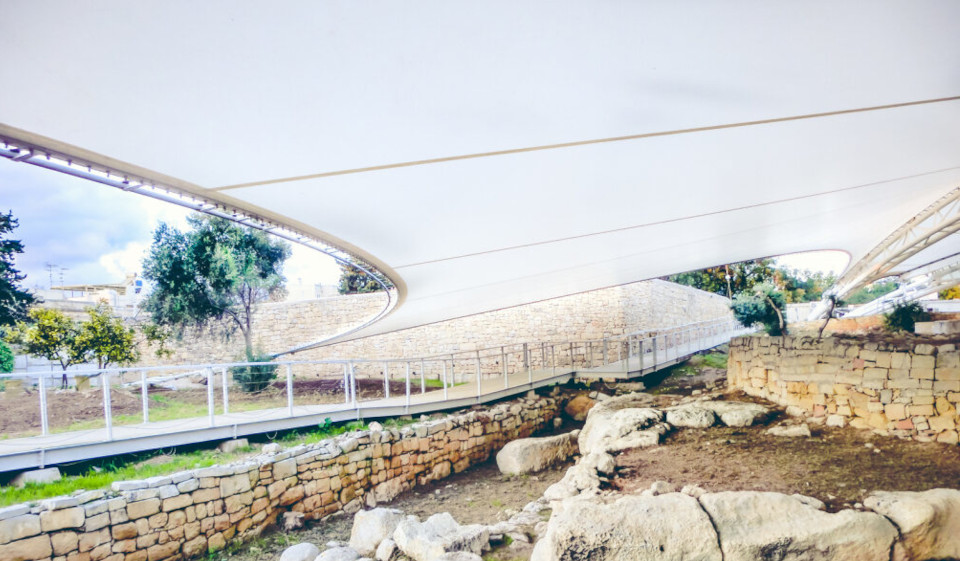

Tarxien Temples Malta
Preserving the Past, Embracing the Future: Taiyo Europe's Innovative Fabric Shelter - Where Ancient Beauty Meets Modern Protection
Fabric Type: PTFE Fiberglass
Market Sector: Entertainment / Leisure
Project Size: 32200 sq.ft.
Architect: Perit Mark Camilleri
Engineer: Maffeis Engineering SpA
Completion Date: January 1, 2017
The Tarxien Temples, dating back to the period between 3600 and 2500 BC, stand as a testament to the architectural prowess of the prehistoric inhabitants of Malta. These megalithic structures, characterized by intricate carvings and unique architectural features, have managed to endure the test of time. However, to ensure their preservation against the natural elements and aging effects such as rain, water, and dust, a protective shelter was deemed necessary.
In a collaborative effort aimed at safeguarding this archaeological treasure, Taiyo Europe played a pivotal role in reimagining the protective structure. The original design, rooted in a lattice structure, underwent a transformation under the expertise of Taiyo Europe. The innovative solution involved the integration of a lightweight fabric structure, with the fabric itself crafted from PTFE (polytetrafluoroethylene) coated fiberglass.
The choice of PTFE-coated fiberglass as the primary fabric material holds significance due to its durability, weather resistance, and ability to withstand environmental challenges. This advanced material not only provides a robust shield against the elements but also contributes to the longevity of the protective structure. The use of PTFE-coated fiberglass fabric ensures that the temples remain sheltered without compromising their historical integrity.
The fabric structure, along with its chosen color, has been thoughtfully selected to seamlessly blend with the natural surroundings. This careful consideration extends to the steel and infrastructure components, all of which have been meticulously designed to harmonize with the environment. The result is not merely a protective covering but an aesthetically pleasing addition that complements the ancient charm of the Tarxien Temples.
The collaborative efforts of Taiyo Europe in adapting the protective shelter for the Tarxien Temples reflect a balance between modern innovation and cultural preservation. Through the utilization of cutting-edge materials and design, the project not only ensures the conservation of these ancient structures but also enhances the overall visual appeal of the archaeological site, creating a harmonious coexistence between past and present.


